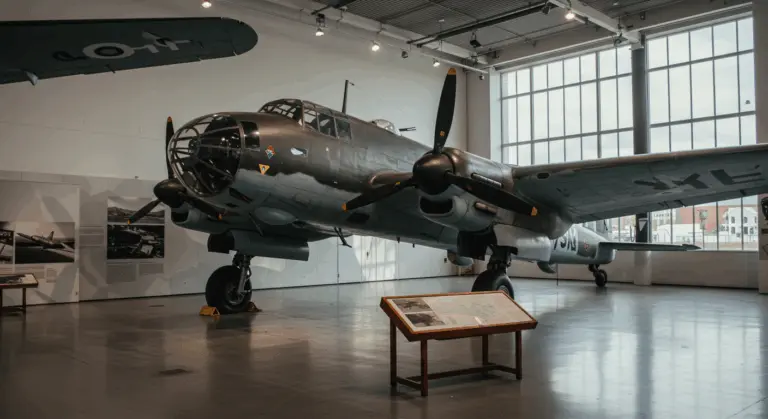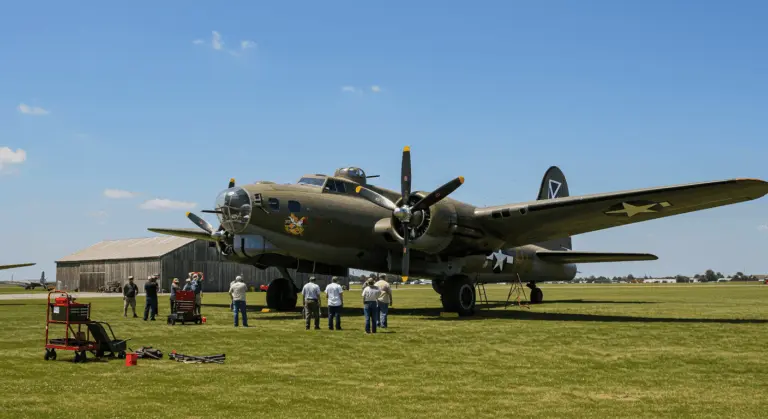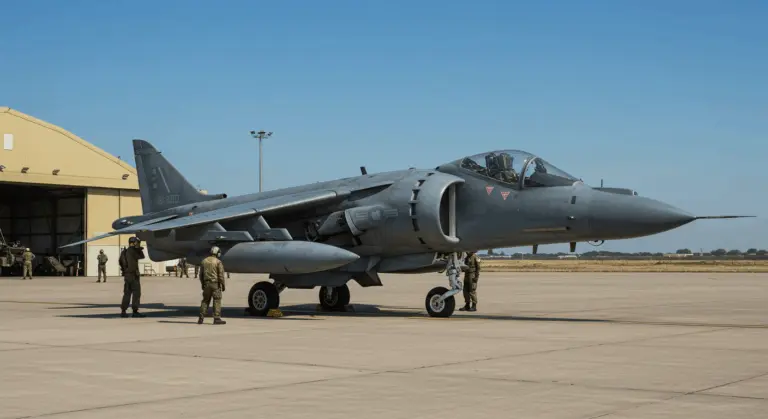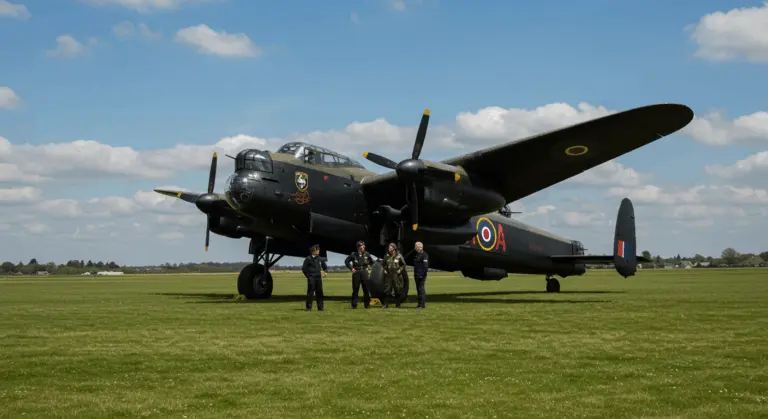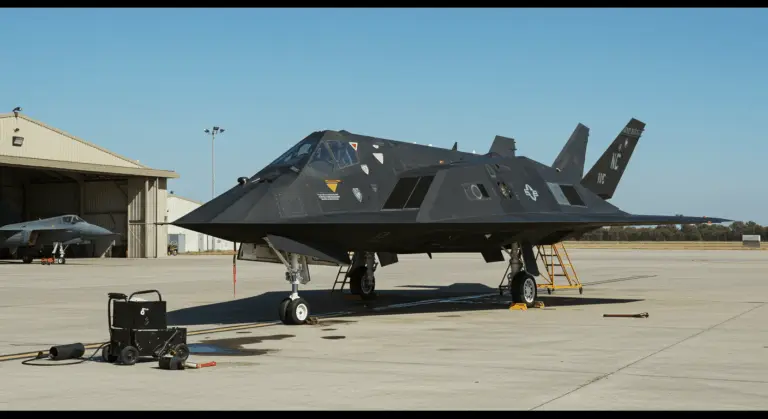Overview of the B-1B Lancer
The B-1B Lancer, affectionately dubbed “The Bone” by its crews, stands as a formidable cornerstone of the United States Air Force bomber fleet. This supersonic variable-sweep wing heavy bomber was developed during the Cold War era. Today, it continues serving as a critical component of America’s aerial defense strategy. With its distinctive silhouette and impressive capabilities, the B-1B represents an exceptional combination of speed, range, and payload capacity—a combination few aircraft worldwide can rival.
The B-1B cuts an imposing figure. It stretches 146 feet in length and towers 34 feet tall.
The B-1B stands out for its versatility as a long-range, multi-mission platform. The aircraft demonstrates remarkable adaptability, operating effectively at low altitudes while executing high-speed sprints to target. This adaptability is especially important for both conventional and nuclear strike missions, though its nuclear delivery role was eliminated under the New START treaty. Today, the B-1B serves exclusively as a conventional weapons platform, delivering massive firepower wherever needed across the globe.
B-1B Lancer Specifications
The B-1B Lancer’s technical specifications reveal an aircraft designed for exceptional performance across multiple parameters. Its variable-geometry wing design allows the wingspan to adjust from 137 feet when fully extended to just 79 feet when swept back. This provides optimal aerodynamic efficiency at different flight regimes. The blended wing/body configuration contributes significantly to the bomber’s impressive range of approximately 7,455 miles, allowing it to strike targets virtually anywhere in the world with aerial refueling support.
Four General Electric F101-GE-102 turbofan engines provide the muscle, each generating 30,780 pounds of thrust. These power plants propel the massive aircraft to speeds exceeding 900 mph at sea level. Maximum speed reaches Mach 1.25 at higher altitudes. The B-1B can operate at ceilings above 30,000 feet, though its design is optimized for low-level penetration missions where terrain-following capabilities shine.
The aircraft boasts advanced avionics, including the AN/APQ-164 radar with terrain-following synthetic aperture radar (SAR) capabilities, the fully integrated Sniper Advanced Targeting Pod (ATP), and sophisticated electronic warfare systems. At its core, the B-1B relies on the IBM AP-101 computer to manage its complex flight and mission systems.
Performance Metrics
The B-1B Lancer’s performance metrics show why it remains a critical asset in the USAF inventory despite its age. Its combat radius exceeds 3,000 nautical miles without aerial refueling. This provides true strategic reach from forward operating locations. With midair refueling, this range extends indefinitely, making the B-1B a truly global strike platform.
In terms of payload, the B-1B has the largest conventional weapons capacity in the U.S. Air Force inventory. This large capacity allows a single Lancer to engage multiple targets in one sortie. This maximizes combat effectiveness while minimizing the number of aircraft required for a given mission.
The aircraft provides efficient cruise during long-range transit and enhanced maneuverability during low-level penetration. At low altitude, the B-1B can sustain speeds of Mach 0.92. This enables rapid ingress and egress from target areas while minimizing exposure to enemy air defenses. These performance metrics translate directly to operational effectiveness, with B-1Bs consistently demonstrating high mission-capable rates during deployed operations—impressive for an aging fleet.
History and Development of the B-1B
The B-1B Lancer’s development story begins with its predecessor, the B-1A, which first took to the skies on December 23, 1974. The original program aimed to create a high-speed, high-altitude penetration bomber to replace the aging B-52 Stratofortress. Four B-1A prototypes were built and tested. Then President Jimmy Carter canceled the program in 1977, citing concerns about cost and the emergence of advanced Soviet air defenses that could threaten high-altitude bombers.
President Ronald Reagan’s administration revived the concept in 1981. The redesigned B-1B was optimized for low-level penetration, with its top speed reduced from the B-1A’s Mach 2.2 to Mach 1.25. This redesign provided several key improvements:
-
Increased payload capacity
-
Improved radar systems
-
Dramatically reduced radar cross-section, which enhanced its survivability.
Rockwell International (later acquired by Boeing) manufactured 100 B-1B aircraft. The first production model flew on October 18, 1984, and the final delivery occurred in May 1988. The total program cost reached approximately $28 billion—equivalent to about $70 billion in today’s dollars. This was a major investment in America’s strategic bomber capability. Despite initial technical challenges and higher than expected maintenance requirements, the B-1B would prove its worth in multiple conflicts over the following decades.
Significant Operations
The B-1B Lancer has built a strong operational record since its combat debut in Operation Desert Fox over Iraq in December 1998. During this four-day bombing campaign, B-1Bs demonstrated their precision strike capabilities against Iraqi targets. These missions confirmed the platform’s effectiveness in actual combat conditions after years of training and preparation.
In 1999, the bomber played a crucial role in Operation Allied Force—NATO’s air campaign against Yugoslavia during the Kosovo War. B-1Bs flew from bases in the United Kingdom and delivered significant portions of the precision-guided munitions used throughout the conflict. These missions demonstrated their ability to conduct sustained operations from forward deployed locations.
Following the September 11, 2001, attacks, the B-1B became a workhorse in Operation Enduring Freedom in Afghanistan. The aircraft’s long loiter time and massive payload capacity made it ideal for providing persistent close air support to ground forces. Afghanistan’s challenging terrain demanded such capabilities. B-1Bs routinely conducted missions lasting over 24 hours with multiple aerial refueling, demonstrating remarkable crew endurance and aircraft reliability.
The bomber subsequently saw extensive action in Operation Iraqi Freedom beginning in 2003, and later in Operation Inherent Resolve against ISIS targets in Syria and Iraq. Throughout these conflicts, the B-1B’s ability to carry diverse weapons loads, remain on station for extended periods, and deliver precision strikes made it a preferred platform for combatant commanders. These combat experiences established the B-1B’s reputation as a versatile and effective component of America’s conventional strike capabilities.
Current Usage and Future of the B-1B
Today, the B-1B Lancer remains an important part of the U.S. Air Force’s long-range strike capabilities. However, the fleet has been reduced from its original 100 aircraft to approximately 45 operational bombers. These aircraft are primarily based at Dress Air Force Base in Texas and Ellsworth Air Force Base in South Dakota, with forward deployments to strategic locations such as Masada Air Base in Japan. These forward positions reinforce America’s deterrence posture and demonstrate U.S. commitment in the Indo-Pacific region—particularly important amid rising tensions with China and North Korea.
Despite its continued relevance, the B-1B fleet faces significant challenges related to aging airframes and maintenance demands. Many aircraft have accumulated over 12,000 flight hours—well beyond their original design specifications. This leads to structural fatigue issues and increasing maintenance requirements. To address operational demands, the Air Force has even reactivated some B-1Bs from storage at the Davis-Mon than Air Force Base “Boneyard” in Arizona. This shows the continued need for the bomber’s unique capabilities.
In the future, the B-1B is expected to remain in service until the early 2030s. It will then be gradually replaced by the B-21 Raider, currently under development by Northrop Grumman. The B-21, scheduled to enter service in the late 2020s, represents the next generation of stealth bomber technology. It will eventually assume the missions currently performed by both the B-1B and B-2 Spirit. Until then, ongoing modernization efforts aim to keep the B-1B relevant and effective, focusing on weapons integration, structural repairs, and avionics upgrades to ensure this venerable platform can continue meeting operational requirements for its remaining service life.
Crew and Operational Structure
The B-1B Lancer operates with a four-person crew:
-
Pilot: Serves as the aircraft commander with overall mission responsibility.
-
Co-pilot: Assists with flight duties and systems management.
-
Two Weapon Systems Officers (SOS): Manage the aircraft’s sophisticated weapons, sensors, and defensive systems.
Training for B-1B crews is rigorous and extensive. It begins with specialized undergraduate pilot or navigator training followed by B-1B-specific qualification training. Crews must master complex mission profiles including low-level navigation, aerial refueling, weapons employment, and defensive tactics. Once operational, crews maintain proficiency through regular training sorties and simulator sessions. Particular emphasis is placed on mission planning and execution in contested environments.
Operationally, B-1Bs are organized into bomber squadrons, typically consisting of 8-12 aircraft each. These squadrons fall under bomber wings, which host the active B-1B fleet. The Air Force Global Strike Command maintains operational control of these assets. They allocate them to regional combatant commanders as needed for both planned deployments and crisis response. This organizational structure enables the flexible employment of B-1B capabilities across the spectrum of conflict—from showing presence during peacetime to delivering decisive firepower during combat operations.
B-1B Lancer Armament and Capabilities
The B-1B’s powerful strike capability stems from its massive payload capacity—the largest for conventional weapons in the U.S. Air Force inventory. Its three internal weapons bays can hold up to 75,000 pounds of ordnance. The versatile armament includes:
Technological Advancements
The B-1B Lancer has undergone significant technological upgrades throughout its service life. These modifications maintain combat relevance in evolving threat environments.
Key modernization programs have focused on structural improvements and enhanced combat systems:
-
Integrated Battle Station (IBS): Replaced aging cockpit instruments with modern, full-color displays for superior situational awareness.
-
Cockpit & Systems: Upgrades include an enhanced air management system, synthetic vision for pilots, and electronic checklists.
-
Communications: Integration of the Link 16 data link enables real-time information sharing with other assets.
-
Defensive Systems: Enhanced electronic warfare capabilities to counter modern threats.

